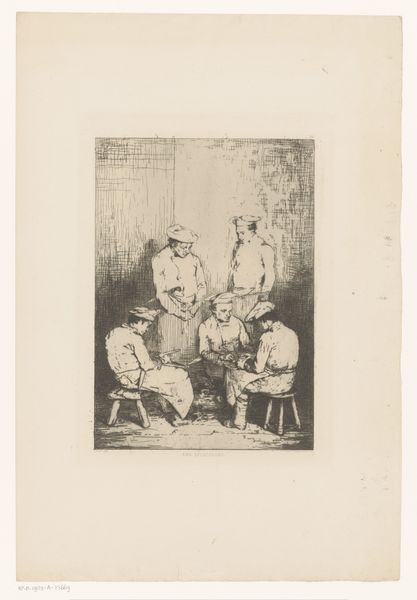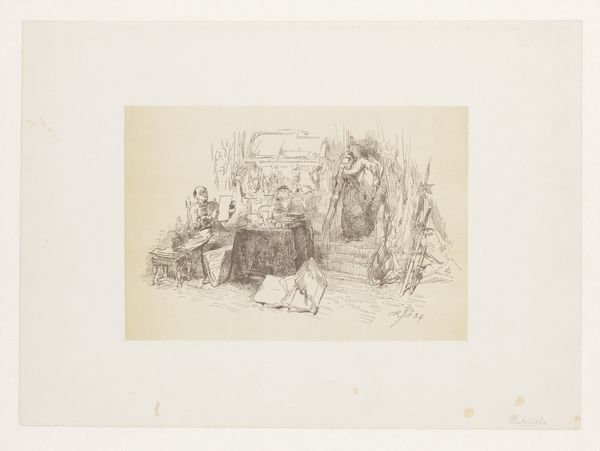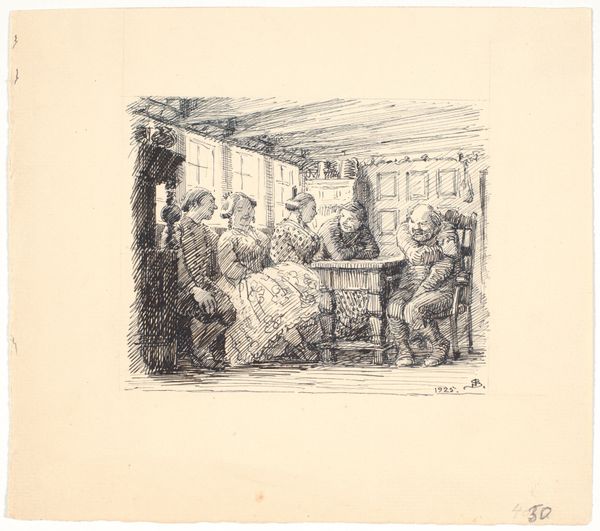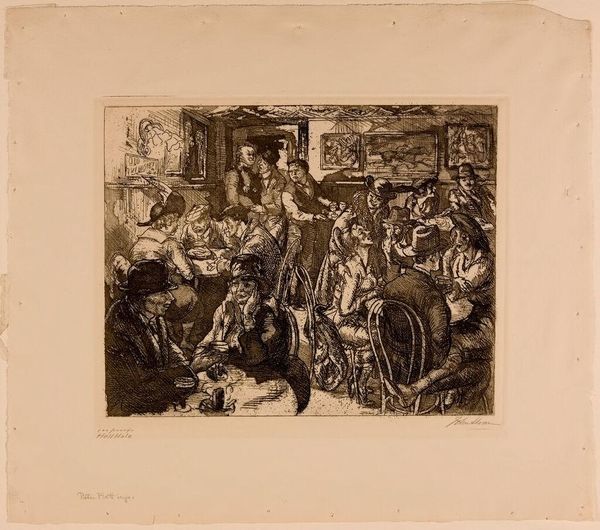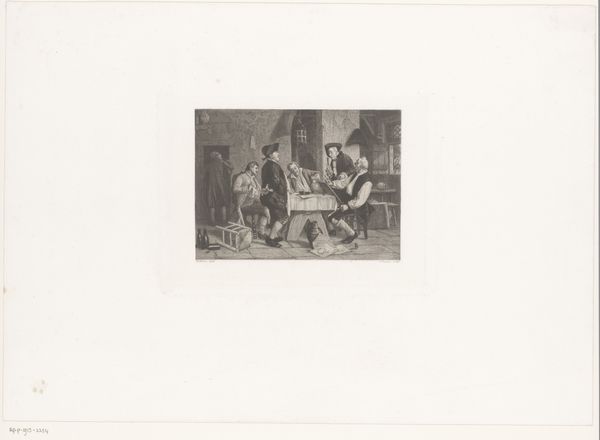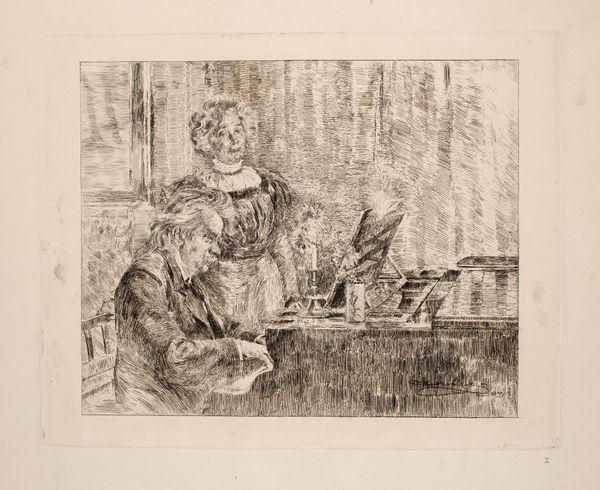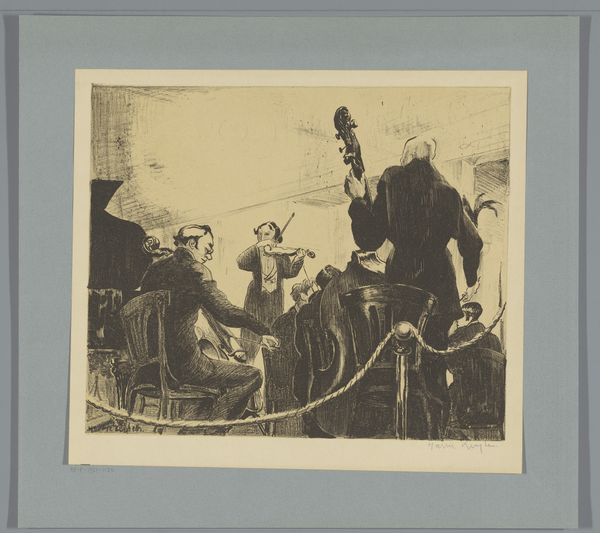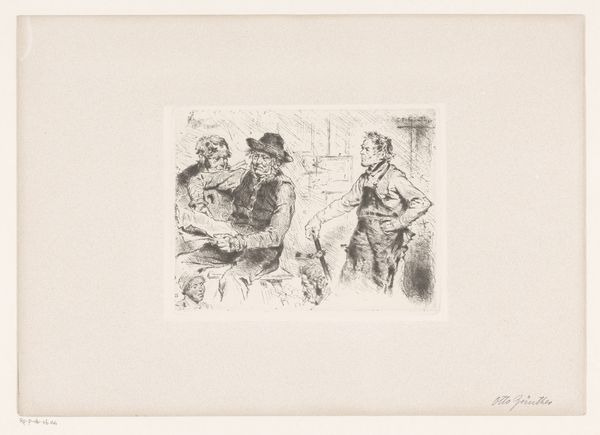
Plate from l'Assommoir (man proposing a toast at table with five other people) 1878
0:00
0:00
drawing, print, etching, paper
#
portrait
#
drawing
#
narrative-art
# print
#
etching
#
paper
#
group-portraits
#
genre-painting
Dimensions: 183 × 238 mm (image); 228 × 257 mm (plate); 325 × 397 mm (sheet)
Copyright: Public Domain
Editor: So, here we have Gaston La Touche's "Plate from l'Assommoir," created in 1878. It’s an etching, a print on paper. What strikes me is the air of weary resignation amongst some of the figures…the expressions seem quite heavy. How do you interpret this work? Curator: This piece really speaks to the socio-political realities of late 19th-century France. The title, "l'Assommoir," refers to Émile Zola’s novel, which explored the devastating effects of poverty and alcoholism on the working class. La Touche’s image captures this sense of despair, doesn't it? Consider the man holding up his glass—is he celebrating or desperately seeking solace? How might class inform our view of the image? Editor: That’s a darker interpretation than I initially considered! I focused on the surface—the lines, the composition. The potential class commentary does shift things. But do you think it risks being overly deterministic to assume every working-class depiction from this era carries such weight? Curator: It's a valid point. It's not about imposing a singular narrative, but examining the context. Think about who had the privilege to make and consume art at this time. This image, referencing Zola's work, likely aimed to provoke thought among a bourgeois audience, exposing them to a world they might not otherwise encounter. So how does that alter the artist's potential message? Editor: So the setting and implied narrative work to confront social inequalities, not just depict a scene. It's a powerful lens to consider. Thanks! Curator: Precisely. It’s in considering the socio-economic context of production, along with its visual elements, that this work reveals itself, showing the tensions of its time. Always remember art does not exist in a vacuum.
Comments
No comments
Be the first to comment and join the conversation on the ultimate creative platform.

